Project Longshot. Reach for the stars
The cold glow of the stars is especially beautiful in the winter sky. At this time, the brightest stars and constellations are visible: Orion, Pleiades, Big Dog with dazzling Sirius ...
A quarter of a century ago, the seven midshipmen of the Naval Academy asked themselves an unusual question: how close is modern humanity to the stars? The result of the research was a detailed report, known as the project "Longshot" ("Long shot"). The concept of an automatic interstellar spacecraft that is able to reach the nearest stars in a reasonable amount of time. No millennia of flight and "ships of generations"! The probe should reach the Alpha Centauri neighborhoods already after 100 years from the moment of its launch into space.
Hyperspace, gravity, antimatter and photonic rockets ... No! The main feature of the project was a bet on existing technologies. According to the developers, the Longshot design makes it possible to build a spaceship in the first half of the 21st century!
One hundred years of flight with existing technologies. Unheard of audacity, given the scale of space distances. Between the Sun and Alpha Centauri lies the "black abyss" width 4,36 of St.. of the year. Over 40 trillion kilometers away! The monstrous meaning of this figure becomes clear with the following example.
If you reduce the size of the Sun to the size of a tennis ball, then the entire Solar System will fit in Red Square. The size of the Earth in the chosen scale will decrease to the size of a grain of sand, while the nearest “tennis ball” - Alpha Centauri - will lie on the Piazza San Marco in Venice.
Flying to Alpha Centauri on a conventional “Shuttle” or Soyuz spacecraft would take 190000 years.
A terrible diagnosis sounds like a sentence. Are we doomed to sit on our “grain of sand”, not having the slightest chance of reaching the stars? In popular science journals, there are calculations proving that it is impossible to accelerate a starship to near-light speeds. This will require "burn" all the matter of the solar system.
And yet there is a chance! The Long Shot project proved that the stars are much closer than we can imagine.
A plate with a map of pulsars, showing the location of the Sun in the Galaxy, as well as detailed information about the inhabitants of the Earth is fixed on the Voyager case. It is expected that the aliens will someday find this "stone ax" and come to visit us. But, if we recall the features of the behavior of all technological civilizations on Earth and history America’s conquests by conquistadors, there’s no “peace-loving contact” ...
Mission of the expedition
To reach the Alpha Centauri system in a hundred years.
Unlike other “starships” (“Daedalus”), the “Longshot” project meant going into the orbit of a star system (Alpha and Beta Centauri). This markedly complicated the task and lengthened the flight time, but would allow for a detailed study of the distant stars' surroundings (unlike “Daedal”, which would have rushed past the target in 24 hours and disappeared without a trace in the depths of space).
100 years take flight. Another 4,36 of the year will be required to transfer information to Earth.
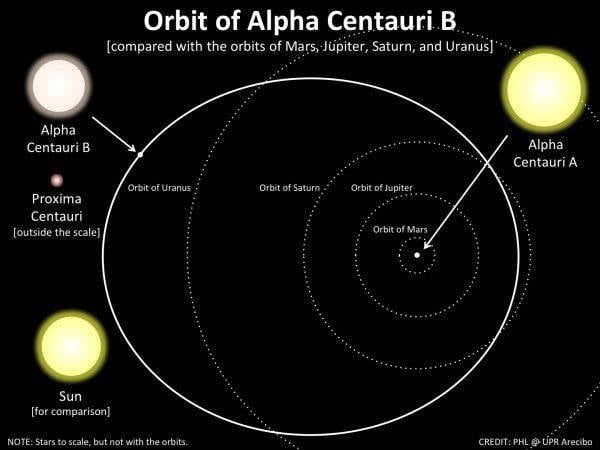
Astronomers are pinning great hopes on the project - if successful, they will have a fantastic tool for measuring parallax (distance to other stars) with the 4,36 basis of St.. of the year.
The age-old flight through the night also will not pass aimlessly: the device will study the interstellar medium and will allow us to expand our knowledge of the external borders of the solar system.
Shot to the stars
The main and only problem of space travel is colossal distances. Having solved this issue, we will solve all the others. The reduction in flight time will remove the question of the long-term energy source and high reliability of the ship's systems. The problem will be solved with the presence of a person on board. Short-term flight makes complex life support systems and huge stocks of food / water / air on board unnecessary.
But these are distant dreams. In this case it is necessary to deliver an unmanned probe to the stars within one century. We are not able to break the space-time continuum, because the only way out is to increase the ground speed of the "starship".
As shown by the calculation, for a trip to Alpha Centauri in 100 years, at least 4,5% of the speed of light is necessary. 13500 km / s.
There are no fundamental prohibitions that allow bodies in the macrocosm to move at a specified speed, however, its value is monstrously large. For comparison: the speed of the fastest of the spacecraft (probe “New Horizons”) after turning off the upper stage was “only” 16,26 km / s (58636 km / h) relative to the Earth.
How to accelerate an interstellar ship to speeds of thousands of kilometers per second? The answer is obvious: you need an engine with a large pitch and a specific impulse of at least 1000000 seconds.
The specific impulse is a measure of the efficiency of a jet engine. It depends on the molecular weight, temperature and gas pressure in the combustion chamber. The greater the pressure difference in the combustion chamber and in the external environment, the greater the flow rate of the working fluid. And, therefore, higher engine efficiency.
The best samples of modern electrojet engines (ERE) have a specific impulse 10000 s; at the outflow rate of charged particle beams - up to 100000 km / s. The consumption of the working fluid (xenon / krypton) is a few milligrams per second. The engine is quietly buzzing throughout the flight, slowly accelerating the unit.
Electric propulsion impresses with its relative simplicity, low cost and the potential to achieve high speeds (tens of km / s), but due to low thrust (less than one Newton), acceleration can take dozens of years.
Another thing is chemical fuel rocket engines, on which the whole of modern space exploration rests. They have a huge thrust (tens and hundreds of tons), but the maximum specific impulse of a three-component LRE (lithium / hydrogen / fluorine) is just 542 s, with a gas outflow rate slightly more than 5 km / s. This is the limit.
Liquid missiles make it possible to increase the speed of a spacecraft by a few km / s in a short time, but they are not capable of anything more. A starship will need an engine on different physical principles.
The creators of "Longshot" considered several exotic ways, including "Light sail", accelerated with a laser power 3,5 terawatts (the method is recognized as not feasible).
To date, the only realistic way to reach the stars is a pulsed nuclear (thermonuclear) engine. The principle of operation is based on laser thermonuclear fusion (LTS), which has been well studied in laboratory conditions. Concentration of a large amount of energy in small volumes of matter in a short period of time (<10 ^ -10 ... 10 ^ -9 s) with inertial plasma confinement.
In the case of Longshot, there is no stable reaction of controlled thermonuclear fusion of speech: prolonged plasma confinement is not required. To create a jet thrust obtained high-temperature clot must immediately "push" a magnetic field over the side of the ship.
The fuel is a mixture of helium-3 / deuterium. The necessary fuel for the interstellar flight will be 264 tons.


Similarly, it is planned to achieve unprecedented efficiency: the calculations show the value of the specific impulse 1,02 million seconds!
As the main source of energy for the power supply of the ship’s systems — lasers of a pulse engine, orientation systems, communications, and scientific instruments — a conventional reactor on fuel-generating uranium assemblies was chosen. The electrical capacity of the installation should be at least 300 kW (thermal power is almost an order of magnitude higher).
From the point of view of modern technology, the creation of a reactor that does not require recharging for a whole century is a difficult task, but possible in practice. Already, on combat ships, YSU is used, whose active zone has a service life comparable to that of ships (30-50 years). With power, there is also complete order - for example, the nuclear installation OK-650, installed on submarine nuclear-powered ships of the Russian Navy, has a thermal power of 190 megawatts and is capable of providing electricity to an entire city with a population of 50000 people!
Such installations are excessively powerful for space. It requires compactness and exact compliance with the specified characteristics. For example, 10 July 1987 was launched "Cosmos-1867" - the Soviet satellite with the nuclear installation "Yenisei" (satellite mass - 1,5 tons, thermal power of the reactor - 150 kW, electric - 6,6 kW, the period of operation - 11 months).
This means that the 300 kilowatt reactor used in the Longshot project is a matter for the near future. The engineers themselves considered that the mass of such a reactor would be about 6 tons.
Actually, this ends the physics and the lyrics begins.
Interstellar travel problems
To control the probe, you will need an on-board computer complex with the makings of artificial intelligence. In conditions when the signal transmission time is over 4 years, effective control of the probe from the Earth is impossible.
In the field of microelectronics and the creation of research instruments, large-scale changes have recently taken place. It is unlikely that the creators of Longshot in 1987 year guessed about the capabilities of modern computers. We can assume that this technical problem over the past quarter century has been successfully resolved.
The situation with communication systems is equally optimistic. For confident transmission of information from a distance 4,36 St. year will require a system of lasers operating on the valley of a wave of 0,532 microns and with a radiation power of 250 kW. In this case, for every square. 222 photon per second will drop the meter of the Earth's surface, which is much higher than the threshold of sensitivity of modern radio telescopes. The data transfer rate from the maximum distance will be 1 kbps. Modern radio telescopes and space communication systems can expand the data exchange channel several times.
For comparison, the transmitter power of the Voyager 1 probe, currently located at a distance of 19 billion km from the Sun (17,5 light hours), is only 23 W - like a light bulb in your refrigerator. However, this is quite enough to transmit telemetry to the Earth at a speed of several kbps.
A separate line is the issue of ship thermoregulation.
A megawatt-class nuclear reactor and a pulsed thermonuclear engine are sources of enormous amounts of thermal energy, moreover, in a vacuum, only two methods of heat removal are possible - ablation and radiation.
The output can be the installation of a developed system of radiators and radiating surfaces, as well as a thermally insulating ceramic buffer between the engine compartment and the fuel tanks of the ship.
At the initial stage of the journey, the ship will need an additional protective shield from solar radiation (similar to that used at the Skylab orbital station). In the region of the final goal — in the orbit of the star Beta Centauri — there will also be a danger of the probe overheating. Equipment insulation and a system for transferring excess heat from all important units and scientific instruments to radiating radiators are required.
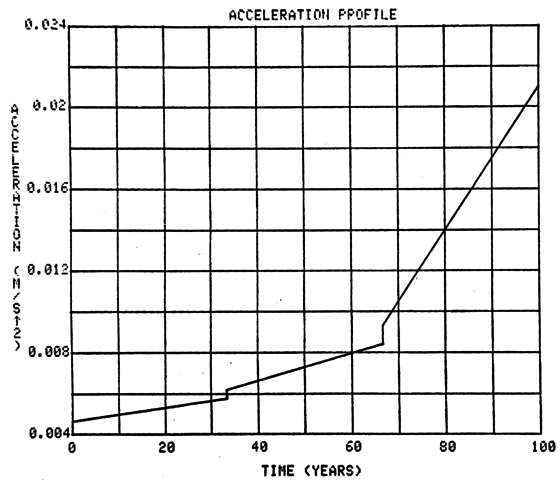

The issue of protecting the ship from micrometeorites and particles of cosmic dust is extremely complicated. At a speed of 4,5% of light, any collision with a microscopic object can seriously damage the probe. The creators of "Longshot" offer to solve the problem by installing a powerful protective screen in front of the ship (metal? Ceramics?), Which was also a radiator of excess heat.
How reliable is this protection? And is it possible to use science fiction protection systems in the form of force / magnetic fields or “clouds” of microdispersed particles held by a magnetic field ahead of the ship's course? Let's hope that by the time the "starship" is created, the engineers will find an adequate solution.
As for the probe itself, it will traditionally have a multi-stage layout with separable tanks. The material for the manufacture of hull structures is aluminum / titanium alloys. The total mass of the assembled ship in near-earth orbit will be 396 tons, with a maximum length of 65 meters.
For comparison: the mass of the International Space Station is 417 tons with a length of 109 meters.
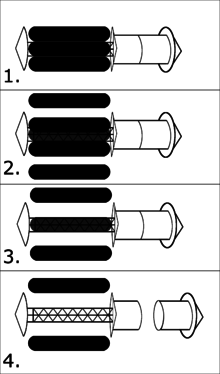
2) 33-th year of flight, the separation of the first pair of tanks.
3) 67-th year of flight, separation of the second pair of tanks.
4) 100-th year of flight - arrival at the target at speed 15-30 km / s.
Separation of the last stage, access to permanent orbit around Beta Centauri.
Like the ISS, the Longshot assembly can be done in a block method in low-Earth orbit. Realistic dimensions of the ship make it possible to use the existing launch vehicles in the process of assembling it (for comparison, the powerful Saturn-V can bring cargo weighing 120 tons to the NOU at a time!)
It should be noted that the launch of a pulsed thermonuclear engine in near-earth orbit is too risky and careless. The Longshot project provided for additional overclocking blocks (chemical rocket engines) for recruiting the second and third space velocity and forcing the ship out of the ecliptic plane (Alpha Centauri system is located on 61 ° above the plane of Earth's rotation around the Sun). Also, it is possible that for this purpose a maneuver in the gravitational field of Jupiter would be justified - like space probes, which managed to escape from the ecliptic plane using “free” acceleration in the vicinity of a giant planet.
Finale
All technologies and components of a hypothetical interstellar spacecraft exist in reality.
The overall dimensions of the Longshot probe correspond to the capabilities of modern astronautics.
If we begin work today, it is likely that by the middle of the XXII century, our happy great-grandchildren will see the first pictures of the Alpha Centauri system from close range.
Progress has an irreversible direction: every day life continues to amaze us with new inventions and discoveries. It is possible that through the 10-20 years all the above-described technologies will appear before us in the form of working samples made at a new technological level.
And yet the way to the stars is too far to talk about it seriously.
The attentive reader probably already drew attention to the key problem of the Longshot project. Helium-3.
Where to get a hundred tons of this substance, if the annual production of helium-3 is only 60000 liters (8 kilograms) per year at a price of up to $ 2000 per liter ?! Brave fiction pinned hopes on the extraction of helium-3 on the moon and in the atmosphere of the giant planets, but no one can give any guarantees about this.
There are doubts about the possibility of storing such a volume of fuel and its dosed supply in the form of frozen “tablets” necessary to power a pulsed thermonuclear engine. However, as the principle of operation of the engine: the fact that more or less works in laboratory conditions on Earth, is still far from use in open space.
Finally, unparalleled reliability of all probe systems. The participants of the Longshots project write about this directly: creating an engine capable of working through 100 years without stopping and overhauling will be an incredible technical breakthrough. The same applies to all other systems and mechanisms of the probe.
However, you should not despair. In the history of cosmonautics, there are examples of unprecedented reliability of spacecraft. “Pioneers-6, 7, 8, 10, 11”, as well as “Voyagers-1 and 2” - they all worked in outer space for over 30 years!
The history of hydrazine trasters (orientation system engines) of these spacecraft is indicative. Voyager 1 switched to a spare kit in 2004 year. By this time, the main set of engines worked in open space 27 for years, sustaining 353000 inclusions. It is noteworthy that the catalysts of the engines all the time were continuously heated to 300 ° C!
Today, after 37 years after launch, both Voyagers continue their insane flight. They have long since left the heliosphere, but continue to regularly transmit to the Earth data about the interstellar medium.
Any system dependent on human reliability is unreliable. However, it should be recognized: in terms of ensuring the reliability of spacecraft, we have managed to achieve some success.
All the necessary technologies for the implementation of the “star expedition” have ceased to be fantasies of scientists who abuse cannabinoids, and embodied in the form of clear patents and existing equipment. In the laboratory - but they exist!
The conceptual design of the interstellar ship "Longshot" proved: we have a chance to break out to the stars. On this thorny path to overcome a lot of difficulties. But the main thing is that the vector of development is known, and self-confidence has appeared.
More information about the Longshot project can be found here: http://ntrs.nasa.gov/search.jsp?R=19890007533.
For the initiation of interest in this topic, I express my gratitude to the "Postman".

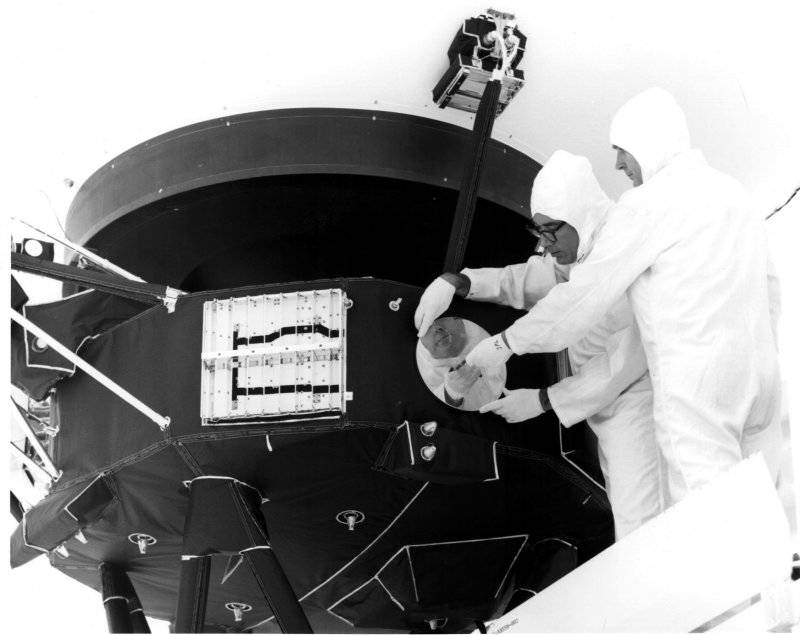
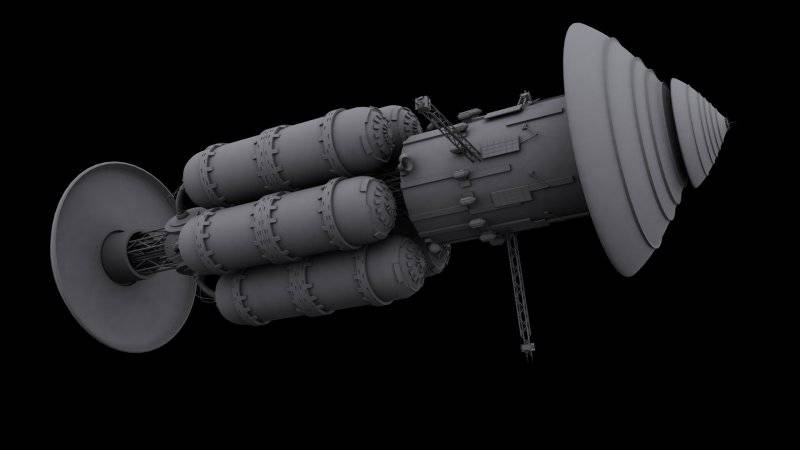

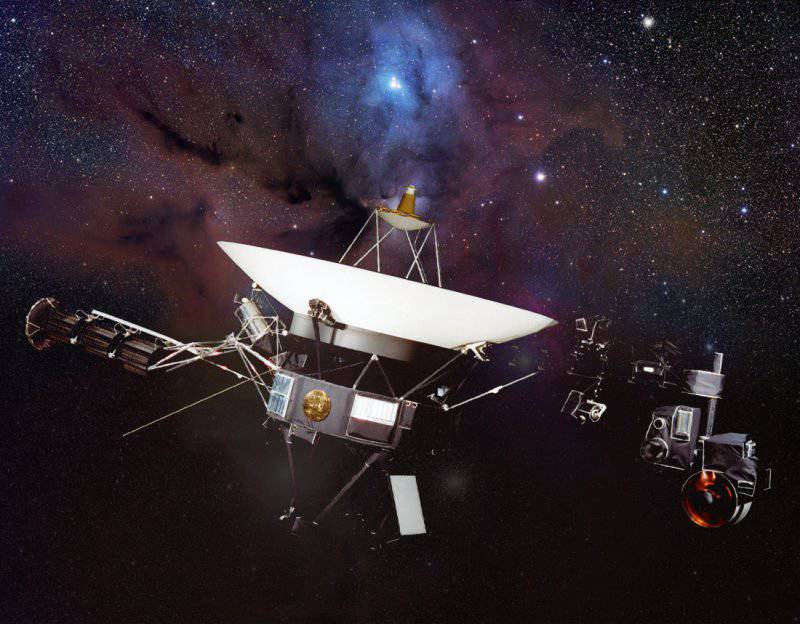
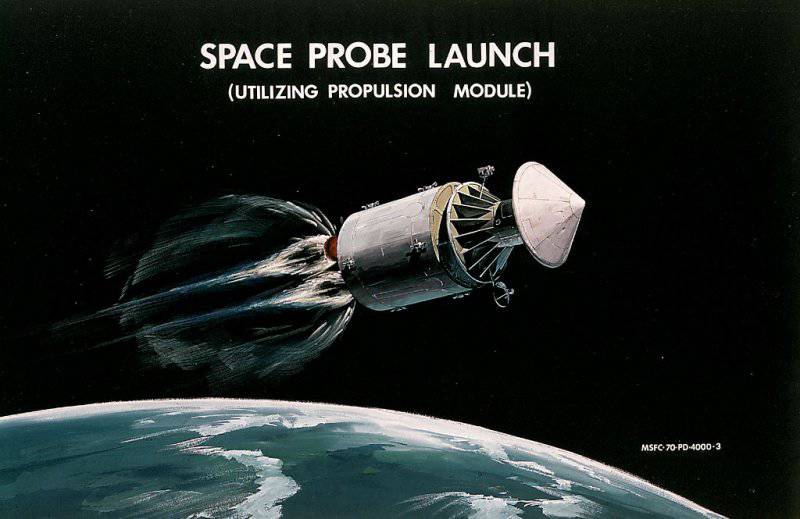
Information